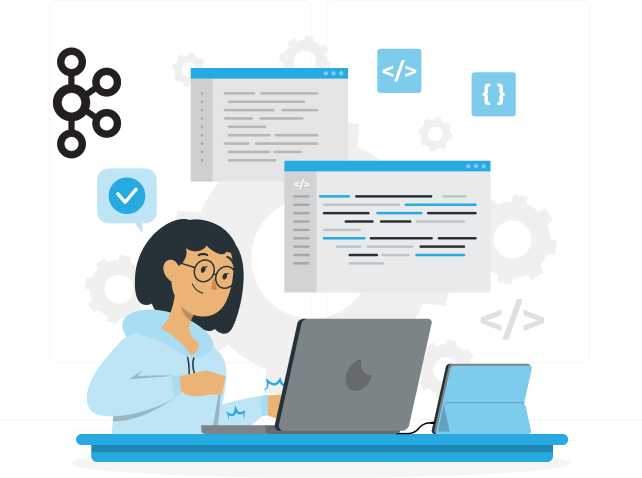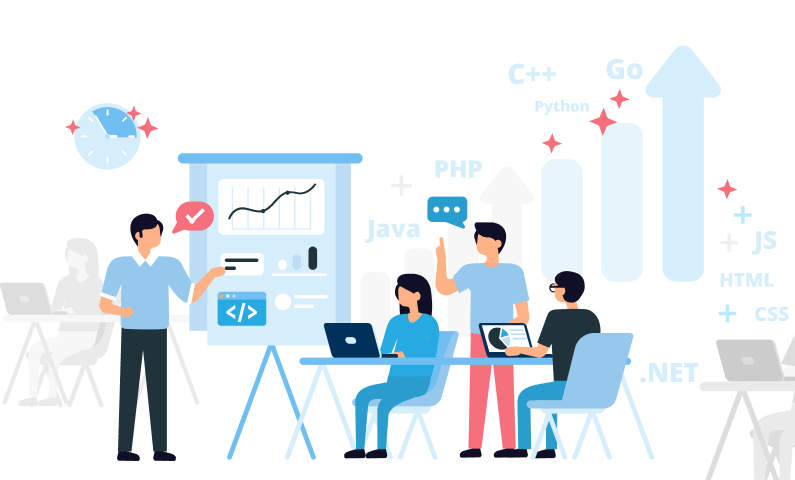In the world of programming, Ruby and Ruby on Rails are among the most confusing nomenclatures. They are intrinsically linked yet serve and have different purposes and characteristics. This blog post is going to touch on the differences between Ruby and Ruby on Rails, uses, and how developers can use each one for perfect application building.
What is Ruby?
Ruby is described as a dynamic, open source language by Yukihiro Matsumoto in the mid-1990s. One major thing it’s known for is its simple and productive nature with respect to extremely human-readable code. That’s why Ruby seems like a pretty good fit for many needs.
Key Features of Ruby
- Object-Oriented: Everything in Ruby is an object, including primitive data types. This design allows for encapsulation, inheritance, and polymorphism.
- Flexible syntax : Ruby’s syntax is clean and concise, allowing developers to express ideas in fewer lines of code compared to many other languages.
- Dynamic Typing: Variables in Ruby do not require explicit type declarations, making it easier to write code quickly.
- Rich libraries: Ruby has a large collection of libraries (gems) that extend the language, enabling developers to implement complex features without reinventing the wheel.
Ruby Programming Language Examples
Ruby is widely applied in the following domains:
- Web Development: Development of web applications using frameworks such as Ruby on Rails
- Data Processing: Scripting to manipulate data or automate specific tasks.
- Game Development: Developing small games by leveraging libraries like Gosu
- Prototyping: To quickly develop prototypes since it can be quite easy to use.
What is Ruby on Rails?
Ruby on Rails, commonly referred to as simply Rails, is an open-source web application framework written in the Ruby programming language. Developed by David Heinemeier Hansson in 2004, Rails is a full-stack framework that follows the model-view-controller (MVC) architectural pattern, separating application logic from user interface concerns.
Key Features of Ruby on Rails
- Convention over Configuration (CoC): Rails generally uses convention over configuration. This means it largely relies on conventions instead of requiring some level of setup; developers can easily implement standard practices.
- Don’t Repeat Yourself (DRY): This principle lets remove redundant code and it removes more code to have cleaner and easier maintenance applications.
- Integrated Testing Tools: This framework helps with test-driven development.
- Modular Rails: It also makes use of modular architecture, which enables developers to write reusable components for better development.
Ruby on Rails Examples
The principal use case of Ruby on Rails is in the development of database-driven web applications. Some examples include:
- E-commerce Platforms: Shopify uses Rails to power its online store platforms.
- Social Media Sites: Twitter was also developed using Ruby on Rails but when it scaled out, it later adopted other technologies.
- Content Management Systems: Others such as Basecamp use Rails to run projects as well as collaborate between team members.
Key Differences Between Ruby Vs Ruby on Rails
Declarative knowledge on what to avoid for a developer to understand Ruby and Ruby on Rails in the choice of the right tool for his/her project can be covered by the following critical distinctions:
| Feature | Ruby | Ruby on Rails |
|---|---|---|
| Type | A general-purpose programming language | A web application framework built using Ruby |
| Purpose | Can be used for various applications (web, desktop, scripts) | Specifically designed for building web applications |
| Syntax | Has its own syntax and rules | Uses Ruby syntax but adds conventions specific to web development |
| Flexibility | Highly flexible; can be used in different paradigms | More opinionated; follows specific conventions that streamline development |
| Learning Curve | Easier for beginners due to simplicity | Requires understanding of both Ruby and MVC principles |
Comparing Ruby with Other Technologies
JavaScript vs. Ruby on Rails
The other comparison that many developers consider when coming to the web development frameworks is JavaScript frameworks, for instance Node.js, versus Ruby on Rails. Even though both of them are based on the aspect of developing dynamic web applications, there are various differences between the two:
Language: JavaScript is basically a clientside language; Ruby is a serverside language.
Performance: Node.js has a specific advantage in non-blocking I/O, processing many simultaneous connections efficiently, whereas Rails might require some optimizations especially in case of such high load.
Community and Ecosystem: Both of them have quite strong communities, but JavaScript has a much wider ecosystem because of its use even for client-side development.
Python vs. Rails:
Probably it’s that third option that often leads users to make comparisons on the subject of Python vs. Rails:
Python’s most famous web frameworks are Django and Flask:
Syntax: The languages both can aim to be readable, but Python’s syntax is straightforward far more often.
Framework Maturity: Django has been around longer than Rails and has a richer set of features included in the framework.
Performance: Both are capable frameworks. Usually, it boils down to a developer’s preferences and the needs of the project.
Learning Path: How to Learn Ruby and Ruby on Rails
For starters, here is a learning path for diving into these technologies:-
1. Learn the Fundamentals of Ruby
Get familiar with the syntax and main concepts of the Ruby programming language.
Use online platforms such as Codecademy or freeCodeCamp to get started through interactive coding practices.
2. Coding Practice with Examples:
Working on small projects or coding challenges that use the features of the ruby programming language.
Take online ruby programming examples to see the real practical usage of the language.
3. Moving to Ruby on Rails:
Once having a good hold on the ruby basics start to read about MVC architecture and how it gets applied within Rails.
Try to follow step-by-step tutorials or courses that will guide you through building a simple web application using Rails.
4. Build Projects:
Use what you have learned to apply it to realistic projects, such as blogs or e-commerce sites, using both Ruby and Rails. Look for opportunities to contribute to open-source projects or collaborate with peers to deepen your knowledge further.
5. Keep Your Skills Up-to-Date
One way of keeping up-to-date with the latest information and best practices in the community is to follow blogs or forums specific to each technology.
Common Ruby vs. Ruby on Rails Questions
Difference between Ruby and Ruby on Rails:
The main reason for this difference is in their purpose: Ruby is a general-purpose programming language used for different types of software developments, and Ruby on Rails, which is the framework for building web applications using the principles of the MVC architecture.
What is Ruby used for?
Ruby can be used for various applications, including web development, such as frameworks like Rails, data processing scripts, automation tasks, game development, and even more.
Examples of projects developed using Ruby
Some examples of projects developed using Ruby are:
- GitHub, a version control system;
- Shopify, an e-commerce system;
- Basecamp is a project management system.
- Finding the version of the current Ruby available
You can check your current version of Ruby by typing `ruby -v` in your terminal or command prompt.
Is it more sensible to learn Ruby or Python?
Chose to learn one or the other depends mostly on your goals:
If the interest is purely into web development then it can be learned both because both have strong frameworks in them (Django for Python and Rails for Ruby).
If more focused towards data science or machine learning, it would be better to go with Python because of strong libraries there.
Conclusion
Conclusively, the differences between Ruby vs. Ruby on Rails are something that a developer needs to know if they are planning to develop good web applications. Ruby is such an elegant programming language that can be used for any kind of application. Instead, Ruby on Rails provides a more powerful framework to the user specifically for developing applications through web technologies.
Both technologies have their advantages and disadvantages; what one chooses is highly dependent on the requirements of a project and individual preference. As you begin your journey with these technologies, don’t forget that resources are plentiful: embrace community support via forums like Stack Overflow or GitHub discussions!
If you are looking to develop applications with Ruby or Ruby on Rails, we are here to help you. You can get in touch with us!

Start a Project with Ajackus











































































